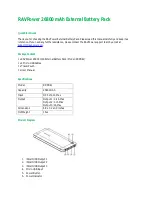
Operation Manual / 4 Product description / A200-L
6 Periodic maintenance / 6.5 Cleaning the turbine during operation
© Copyright 2020 ABB. All rights reserved.
HZTL4036_EN
Rev.Q
July 2020
6.5
Cleaning the turbine during operation
6.5.1
Introduction
Combustion of heavy fuel oil in diesel engines causes contamination of the turbine blades
and nozzle rings of the turbochargers.
Contamination increases with time, which is why regular and properly carried out cleaning
operations are important to remove any deposits.
Contaminated turbine components lead to a reduction in the turbocharger efficiency. Fur-
thermore, the exhaust gas temperature after the cylinders can rise and the charging pres-
sure in the air receiver can drop.
Contamination of the turbine also leads to rotor unbalance. A very high level of contamina-
tion can lead to intolerably high rotor unbalance.
Despite periodic cleaning during operation, experience shows that overhauls during which
the turbine and nozzle ring (or VTG) are mechanically cleaned cannot be omitted.
Cleaning method
The turbine and the nozzle ring are cleaned during operation using the dry cleaning method.
This cleaning method is tested and approved by ABB Turbocharging.
Interval for dry cleaning
The interval between the cleaning cycles depends greatly on the operating conditions.
Cleaning should normally take place about every 50 hours of operation.
Principle of dry cleaning
During dry cleaning, the dirt coating is removed by the mechanical action of the impacting
solids (granulate).
Operating state
The dry cleaning of the turbine end components is carried out at an engine load of
5 … 85%.
Cleaning several turbochargers
If several turbochargers are installed on an engine, ABB Turbocharging recommends clean-
ing one turbine after the other.
Page
40
/
110
















































